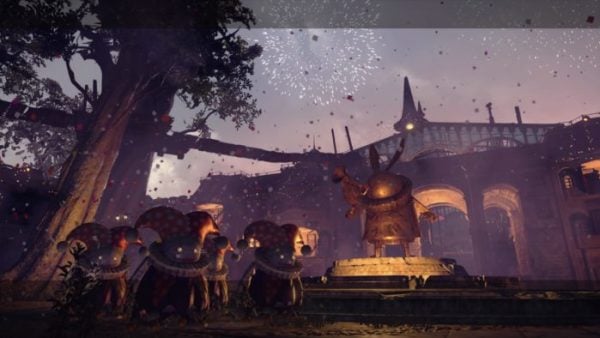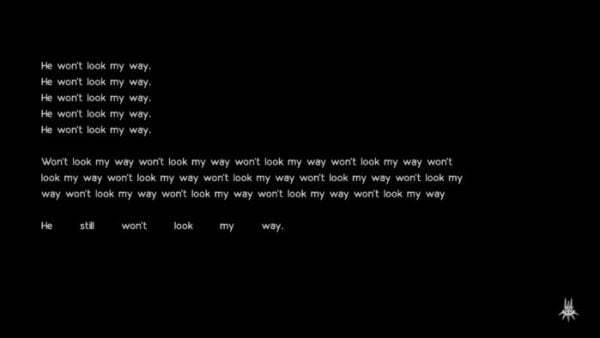Music and Sound Design

You can’t talk about NieR: Automata without at least talking about the game’s soundtrack. Most people already know the music in this game is phenomenal, but where it truly excels in its sound mixing and design. Upon completing a side mission, the overworld track fades out slowly, gradually making way for a new theme that is more fitting for the mood of the story you’ve just heard.
Speaking of the overworld theme, it’s another track that starts off with just strings, but as you progress through the story, the music itself starts to ‘evolve’ and you’ll hear more instruments coming into play, giving you the full weight of the song. NieR: Automata is full of nice touches with its sound design, and the game never ceases to charm when vocal tracks fade seamlessly into the background music as you talk to NPCs.
Any video game can have a good soundtrack, but NieR: Automata really ups the ante by treating us to small and varied doses of its music to fit the tone of the story it tells.
Story and World-Building

Yoko Taro is well-known for creating an especially zany world in Drakengard, and the NieR series is no different. NieR: Automata alone presents us with a version of Earth that’s ravaged by a war between two warring robot factions, but if we zoom out from Automata’s setting, we’re actually in a universe with an incredibly rich history that dates all the way back to the birth of an evil flower that was introduced in Drakengard 3. The history alone is fascinating, and while you can play NieR: Automata without prior knowledge of the series, knowing the game’s story and background really adds to the player experience.
Not only that, you can always count on the Drakengard and NieR games to surprise you with unexpected story twists and beats, too. NieR: Automata is one of the rare games that actually hides more than 50% of its story content behind the very first ending players can get to, and you’ll have to unlock all of the endings if you really want to get the full picture. It’s all worth it, though; each playthrough offers just enough new and extra content to keep you hooked.
NieR: Automata also excels in presentation by switching up the color palettes whenever you enter a new area or a new phase in the story. Hint: when things go grayscale in Taro’s games, you know some shit’s about to go down.
Implementation of Gameplay Mechanics and Other Unique Design Choices

One of the highlights of the NieR: Automata demo was the way the game forced you into certain fixed camera angles as you progressed through the dungeon. The game also transitions into a bullet hell segment during certain boss fights, mixing up the gameplay style, and preventing you from just hacking and slashing away at your foes non-stop. However, Automata also features a few other interesting mechanics that you’ll eventually have to make room for in your play style.
For instance, your second playthrough will reward you with the ability to hack into machines and attack them through there. The hacking mini-game is essentially another twin-stick shooter segment where you have to destroy certain parts of the machine’s system before gaining access to its core. What’s really cool about the hacking mini-game, however, is the fact that whatever music is playing during combat or in the open world turns into a chiptune version as you hack. Y’know, to fit the high-tech vibe of the whole hacking thing.
Just like its predecessor, NieR: Automata also has a few text adventure segments, which the game refers to as ‘Novels.’ This is usually where you’ll get even more insight into what a character is thinking, or learn more about their past. All of this could be presented in a cutscene, but there’s just something oddly charming about reading a character’s thoughts as the game plays some peaceful and sometimes melancholic music in the background. Automata’s writing is fantastic, and the text adventure segments are actually a highlight in the game, instead of being a drag like most might think.
